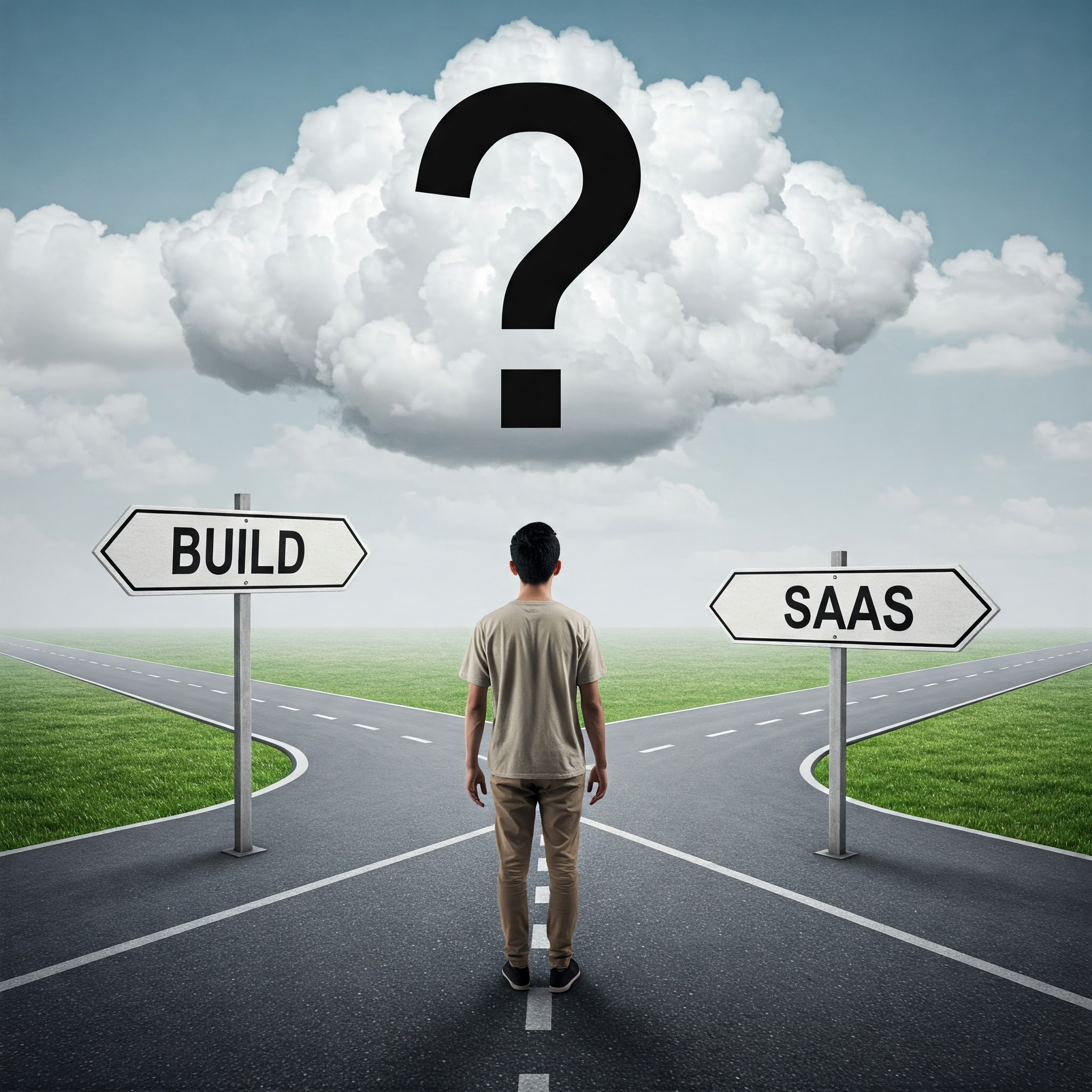The “Build vs. SaaS” decision is a fundamental strategic choice for any organization, and there may not be a single answer. Is your team’s time better spent building, or growing?
Adopting a “SaaS-first” approach has become increasingly popular, particularly for non-core services within an organization. With the cloud, Software-as-a-Service (SaaS) is the euphemism for the traditional COTS (Commercial Off-The-Shelf) software. The shelf is now the cloud.
SaaS solutions are usually cloud-based, allowing users to access the software from any device with an internet connection, improving flexibility and remote work capabilities.
Of course, there are benefits in building what matters, and “SaaSing” the rest, however the decision is a strategic one with so many factors at play.
Some Benefits of SaaS
✅ Focusing on Core Business Competencies and offloading non-core to SaaS
✅ SaaS may be cost-effective for non-core functions
✅ Faster, Agile: Business can hit the ground running and adjust their cost and usage.
When SaaS is not the shortcut you are missing (When you should build)
☑️ Building might be necessary for your unique core competency
☑️ The Need for niche or complex requirements that no SaaS provider can fulfil
☑️ Total control over data and systems to ensure compliance.
☑️ Willingness to invest in ongoing innovation, development and maintenance
Security Considerations before choosing SaaS as an Option
↳ Data Security and Compliance: Does the SaaS meet the security and compliance requirements of your data? Do your assessment. While SaaS option may be the most practical for small and medium-sized businesses, other factors that should go into consideration e.g. data residency, security posture of the vendor etc
↳Compliance: Depending on your industry and the type of data you handle, you may need to ensure that your software solution complies with relevant regulations, such as GDPR or HIPAA. Both SaaS providers and custom software must adhere to these regulations.
↳Third-Party Integrations: If you’re planning to integrate your software with other third-party applications, consider the security implications of those integrations. Make sure that both the SaaS provider or your custom software can securely handle these integrations.
↳Vendor Management: If you choose a SaaS solution, you’ll need to trust the provider to maintain a secure environment. Evaluate their security policies, track record, and reputation before committing to a SaaS solution
Other Considerations
↳ Cost Evaluation: Compare the total cost of ownership (TCO) of build and SaaS. Factor in the cost of maintenance. Will it be worth it in the long run? While SaaS solutions generally have lower upfront costs, subscription fees can add up over time. Building custom software requires a higher initial investment but may be more cost-effective in the long run.
↳Customization: SaaS solutions may offer limited customization options, whereas building custom software allows for full control over the features, design, and functionality.
↳Ownership: With a SaaS solution, you don’t own the software and may face limitations on its use or customization. Building your own software gives you full ownership and control
↳Support and Maintenance: SaaS providers typically handle support and maintenance, while custom software requires internal resources or external service providers for ongoing support and updates
Hashtags:
#SaaSStrategy #CloudComputing #SaaSSecurity #DataSecurity #BusinessDecisions #DigitalTransformation



